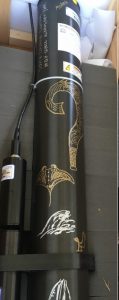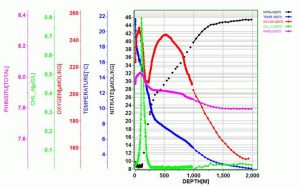While we might have difficulty traveling due to COVID-19, that doesn’t mean we can’t learn more about the planet – – both inside the classroom and from afar. That leads us to SOCCOM.
What does that acronym mean?
SOCCOM stands for Southern Ocean Carbon and Climate Observations and Modeling project. In short, this unique and important program allows National Science Foundation researchers to unlock the mysteries of the Southern Ocean and determine its influence on the Earth’s climate. The National Science Foundation is an independent agency of the United States government that supports fundamental research and education in all the non-medical fields of science and engineering.
How does this apply to South Colonie and its students?

The South Colonie CSD is one of only 13 districts nationwide (with a few additional countries) that have been chosen to participate in the latest SOCCOM Float launch. The project is being led by South Colonie Science Teacher Stacey Sebert.
“In 2017, I participated in a teacher workshop called EARTH (Education and Research:Testing Hypotheses) at MBARI (Monterey Bay Aquarium Research Institute) Monterey Bay, CA, and it was there that I learned about SOCCOM floats. Since then, my classes have utilized data collected from them,” said Ms. Sebert. “This year, South Colonie’s Marine Science class was selected to name one of the floats being launched. In late December 2020, 13 floats were launched, and the data collected by our float, Moana, has started to trickle in”
The ‘float launch’ is a $250,000 float that collects data from the ocean. It’s main priority is gathering information on the ocean’s current and future status. The floats are equipped with biogeochemical sensors which measure such things as pH, nitrates, and oxygen to study the health of the ocean.
The Marine Science class at South Colonie has become a participating group in the study and named their float Moana, Hawaiian for “of the sea”. South Colonie student Antonia Delaney suggested the name.

The research vessel set off in December and the first set of data was sent to the class on Jan. 8. To save battery life, floats don’t continually send data. Research can be tracked virtually to allow visitors to view its coordinates in the ocean and keep up-to-date on its research. It’s currently residing at 5,147 meters depth (that’s 3.2 miles). To view its updates, please visit here.
Additional information about Moana is available via links that appear on the float summary table (scroll to the bottom or near bottom). If you click on the float name you will see pics of the launch. The floats data will be located near the bottom of the page. Visit this page to access that information.
While it’s winter and we’re all looking for something to keep us busy, keep track of this unique project and keep yourself informed on the important research that South Colonie students are participating in this year.
